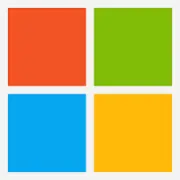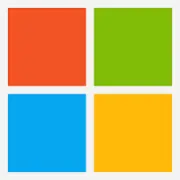
Overview
What is SSIS?
Microsoft's SQL Server Integration Services (SSIS) is a data integration solution.
SSIS, the must have extension for SSMS
Rapid and low cost integration with various sources for a DW
One of the best on-premise ETL tools
Amazing data warehousing tool
Good for startups or companies with limited data variability, Big data companies will need better tools
Data integration and migration are made easier with this tool.
Trust Microsoft to vanish your data integration troubles
Tool for data integration and migration
SQL Server Integration Services (SSIS) is a winner and helps solve many business problems effectively.
Worth of money
Data processing with SSIS
SSIS, free but not intuitive
Provides value to cost and excellent with MSBI Stack, But needs more features/updates
Great product to consolidate data for SQL Reporting purposes
Awards
Products that are considered exceptional by their customers based on a variety of criteria win TrustRadius awards. Learn more about the types of TrustRadius awards to make the best purchase decision. More about TrustRadius Awards
Popular Features
- Connect to traditional data sources (53)8.888%
- Simple transformations (53)8.585%
- Complex transformations (52)7.777%
- Testing and debugging (48)6.161%
Pricing
What is SSIS?
Microsoft's SQL Server Integration Services (SSIS) is a data integration solution.
Entry-level set up fee?
- No setup fee
Offerings
- Free Trial
- Free/Freemium Version
- Premium Consulting/Integration Services
Would you like us to let the vendor know that you want pricing?
26 people also want pricing
Alternatives Pricing
What is Clear Analytics?
Clear Analytics is a business intelligence solution that enables non technical end users to perform analytics by leveraging existing knowledge of Excel coupled with a built in query builder. Some key features include: Dynamic Data Refresh, Data Share and In-Excel Collaboration.
What is Vertify?
VertifyData is a cloud-based integration platform with core integration capacities, including a drag-and-drop interface and real-time synchronization. It also offers over 80 prebuilt connectors and templates, plus customizable integrations for scaling businesses.
Product Demos
Demonstration of Multicast transformation in SQL Server Integration Services (SSIS)
SSIS Tutorial Part 78- What is Multicast Transformation in SSIS (Quick Demo)
SSIS Tutorial Part 119-Execute SQL Task (Full Result Set) Demo in SSIS Package
SSIS Tutorial Part 72- What is Conditional Split Transformation in SSIS (Quick Demo)
SSIS Tutorial Part 02- How to Load Tab Delimited File To SQL Server Table in SSIS Package
Features
Data Source Connection
Ability to connect to multiple data sources
- 8.8Connect to traditional data sources(53) Ratings
Ability to connect to traditional data sources like relational databases, flat files, XML files and packaged applications
- 6.2Connecto to Big Data and NoSQL(40) Ratings
Ability to connect to non-traditional data sources like Hadoop and other big data technologies, and NoSQL databases
Data Transformations
Data transformations include calculations, search and replace, data normalization and data parsing
- 8.5Simple transformations(53) Ratings
Simple data transformations are calculations, data type conversions, aggregations and search and replace operations
- 7.7Complex transformations(52) Ratings
Complex data transformations are data normalization, advanced data parsing, etc.
Data Modeling
A data model is a diagram or flowchart that illustrates the relationships between data
- 8.6Data model creation(27) Ratings
Ability to create and maintain data models using a graphical tool to define relationships between data
- 7.1Metadata management(33) Ratings
Automated discovery of metadata with ability to synchronize and share metadata with other tools like Master Data Management
- 8.1Business rules and workflow(42) Ratings
Ability to define and manage business rules and workflows
- 7.3Collaboration(38) Ratings
Collaboration is enabled by a shared repository of project information and metadata
- 6.1Testing and debugging(48) Ratings
Tool to debug and tune for optimal performance
Data Governance
Data governance is the practise of implementing policies defining effective use of an organization's data assets
- 7.4Integration with data quality tools(36) Ratings
Integration with tools for cleansing, parsing and normalizing data according to business rules
- 6.5Integration with MDM tools(36) Ratings
Integration with master data management tools to ensure data consistency across the organization
Product Details
- About
- Tech Details
- FAQs
What is SSIS?
SSIS Technical Details
| Operating Systems | Unspecified |
|---|---|
| Mobile Application | No |
Frequently Asked Questions
Comparisons
Compare with
Reviews and Ratings
(259)Attribute Ratings
Reviews
(1-25 of 53)- SSIS is good for small, simple data syncs.
- SSIS is good for moving data quickly into SQL Server (good batch performance).
- Very hard to diff for code review when changes are made.
- Very buggy IDE (freezes in Visual Studio, doesn't always show what's in the underlying XML properly)
- Lacking lots of features or more modern tools, like ability to monitor for changes to the source schema and apply them to the target.
SSIS, the must have extension for SSMS
- Offers real-time, message-based capabilities
- Tight integration with SQL Server and visual studio
- Ease and speed of implementation
- Standardized data integration
- Sometimes create issues in non-windows environments.
- SSIS lacks support for alternative data integration styles.
- Problematic integration with other products.
- SSIS is an in-memory pipeline. That’s why it’s important to make sure that all transformations occur in memory
- Try to minimize logged operations
- Plan for capacity by understanding resource utilization
- Optimize the SQL lookup transformation, data source, and destination
- Schedule and distribute it correctly
- Easily connect with a wide variety of sources.
- Provide control and flow to job execution order.
- Able to extend functionality through scripting tasks.
- Not flexible when source/target tables and file formats change.
- Inflexible with regards to varying data types when Excel spreadsheets are used as a source or columns are added (as per previous item).
- Occasional issues around mixed development and production x86/x64 run times can be frustrating.
One of the best on-premise ETL tools
- Connect to various sources
- Basic transformations are included
- Connect to various destinations
- We still need plugins to connect to SFTP and other sources. Many vendors in the market give this by default
- It's an ETL tool and the ability to do ELT or ETLTL means spinning up more pipelines and packages
- It still has compatibility issues in Visual Studio 2017
Amazing data warehousing tool
- I am able to use the GIS tools to easily generate solutions without coding.
- Built in tasks that speed up web developing.
- SSIS enables automated data preparations.
- Amazing integration with Microsoft tools.
- Creation of ETL mapping.
- It depends so much on the Microsoft environment and has integration issues with other formats like JSON and Excel.
- Error messages are unclear, this makes us spend a lot of time figuring out what has gone wrong making the debugging process hectic.
Good for startups or companies with limited data variability, Big data companies will need better tools
- Standard ETL use cases for daily loads
- Loading incoming data from Vendors which is placed on FTP and adding them to the SQL Warehouse
- Creating outgoing data files and writing them to Vendor FTPs
- Easy Active Directory integration for seamless connections to SQL Server
- CI/CD by hosting the code on visualstudio.com
- API connections are not a native functionality. We use Zappysys extensions but they work only in certain cases.
- Dependency executions - no simple way to create a hierarchy/chain of executions. Ex: Define if the execution of the child process should be stopped if a parent fails or a certain condition is triggered in the parent process and then redirect to a different part of the chain (think like a flowchart for executions).
- Assists in connecting to several data sources and loading the resulting data.
- Less expensive than other ETL tools of same stature.
- Does away with the requirement for coding scripts.
- There isn't a lot of room for building user-required automation.
- Some activities need manual labour, such as exporting multiple tables in CSV format one at a time.
2.There is no additional necessity to learn anything other than SQL.
3. Assists in the analysis of client data by bringing it all together in one place.
4. Data leaks of clients' personal information are avoided. It is HIPAA compliant and it has very secure server.
- Data Mapping & Integration
- Maintaining data sources as per needs
- Keeping track of all activities pertaining to data sources
- Speed at which data is retrieved from the data sources
- Ease of connecting to various data sources
- Integration with other cloud services
Tool for data integration and migration
- Encrypt files with SSIS and send them to various network locations this way we solve complex business problems.
- We can migrate DTS packages to SSIS while choosing to run DTS packages using DTS runtime or incorporate DTS packages into SSIS this way we migrate DTS packages to SQL Server Integration Services.
- We can transform data to make sure it complies with the rules of the database they are migrating to other servers with Integrations Services.
- User-required automation needs much more scope.
- Exporting numerous tables in CSV format has to be done one by one by manual.
SQL Server Integration Services (SSIS) is a winner and helps solve many business problems effectively.
- Create Packages in SQL Server Data Tools
- Reuse Control Flow across Packages by Using Control Flow Package Parts
- Build Integration Services User Interface
- We can improve Integration Services error messages, including a list of most Integration Services errors and their description.
- Improvement to create custom event handlers for these events to extend package functionality.
- Better support for tools and wizards helping with Legacy Package Deployment.
Worth of money
- Integration with multiple data sources
- Creating Schemas
- Data modeling
- Data cleaning
- Ease of use for initial get into application
- Application Loading
Data processing with SSIS
- Data transfer
- Automation
- Programability
- Scheduling
- Clarity on errors
- Support
Processing data, for ETL, so you can just get the files, using something like FTPs automation and the data will be processed, and then you can just work on your reports or do all the BI needed for the company
SSIS, free but not intuitive
- Runs flawlessly after setup properly
- Powerful, as mentioned
- Free
- Confusing operation, even with its gui
- Requires special install and setup
- Requires the Visual studio integration services install (separate interface from SSMS)
- Could be more easily integrated into SSMS, but may also be used for other products that I'm not aware of
GUI is nice and it's very cool to see your project actually running in real time.
Provides value to cost and excellent with MSBI Stack, But needs more features/updates
- FTP Downloads.
- Run 3rd party softwares.
- Intuitive UI.
- Need more connectors/sources/destination components.
- Ability to support not just Microsoft services but others too.
- More updates & new features.
- If the job fails, we are alerted
- It has a easy to use GUI to build projects
- Does well with gathering data from different types of data sets
- Converting flat files of data requires a data transformation that is tedious
SQL Server Express + SSIS basics
- Extraction and convert data from various sources
- Pipelining in the data extraction process
- Unions between different data sources akin one meta datasource
- Some labels in Visual Studio snap-in for MS SQL Server are collapsed on non-English (German & Russian tested) locales.
Less appropriate: big key-value data storages processed slowly, and hard to make data mining through uniting non-RDBMS and RDBMS data sources naive way. The data from non-SQL databases should be prepared accordingly to be represented in a table-like way if possible.
- SQL Server Integration Services design of dataflows allow us collect and merge data from a large variety of sources.
- The structure of packages in a solution allow us to separated distinct functions yet share a common collection of parameters to ensure consistency.
- The availability of environments to provide differing parameters is also a powerful option to allow us to design reusable solutions.
- The deployment process could use the improvement of deploying the Parameters into an environment of choice. Having to do this manually is time consuming and error prone.
- Propagation of values from within a package to a parent package is lacking. This is helpful when using a parent package to execute and report on a collection of smaller related packages.
- Import data into tables
- A lot of documentation/support on the web
- Scheduling packages
- Very easy to use
- Error messages are could be more clear
SSIS Just Works
- Process flow.
- Connection to a wide array of sources.
- Built-in upsert component.
- Better operability with source control systems.
Great Tool For ETL Design
- Data migration is pretty fast.
- SQL Server is highly compatible with the database.
- We receive errors in moving JSON data to the database. It does not work efficiently in JSON-related data.
- ODBC connections give a connection error after a certain period of time.
Our use of SSIS
- Easy to manage projects and packages.
- Ideal for repetitive tasks.
- Can handle complex tasks consisting of multiple, diverse packages.
- Include SSIS in the default installation of SQL.
- The flexibility and different packages and options can make it confusing for first-time users.
- Recommendations in the selections could make it easier to build a solution.
SQL Server Integration Services (SSIS) is not easy for new users due to the plethora of options available.
SSIS enables you to build the data lake of your dreams!
- Handles multi-step, complex data moves.
- Pulls from a variety of data sources.
- Add-ons are readily available to extend their usefulness.
- Integration with SQL Server and data tools.
- The package publishing feature has gotten better over the years, but it could still be simplified.
- Incorporating features from add-ons into the standard application would be helpful (mostly in relation to data sources).
- Easier configurations for multiple publishing targets (dev/test/prod) with associated data connections.
SQL Server Integration Services, worth a look
- It sits inside of Visual Studio and SSMS so you have a consistent look and feel across toolsets
- Extensions. We use Pragmatic work transforms that seamlessly fit into SSIS to make certain tasks easier
- Performance. SSIS is not the fastest tool out there but it is more than enough for our needs and since it is bundled with SQL Server you get great value.
- Funny thing, working with Excel requires hacks and work arounds. Really wish Microsoft would fix this.
- More transformations to reduce the need of 3rd party tools. Tasks like SFTP would be nice.
1. To populate our data warehouse. Running SSIS packages from the server on a 10-minute schedule, we extract, transform and load the data into the warehouse to support all internal reporting and provide data as a service to our global partners.
2. Bulk data import to our CRM system. Building packages to run on-demand to bulk import structured data to our CRM instance.
In the past, we have used SSIS packages to complete a one-time migration from a legacy CRM system to the current CRM.
- Ease of use - can be used with no prior experience in a relatively short amount of time.
- Flexibility - provides multiple means of accomplishing tasks to be able to support virtually any scenario.
- Performance - performs well with default configurations but allows the user to choose a multitude of options that can enhance performance.
- Resilient - supports the configuration of error handling to prevent and identify breakages.
- Complete suite of configurable tools.
- Connection managers for online data sources can be tricky to configure.
- Performance tuning is an art form and trialing different data flow task options can be cumbersome. SSIS can do a better job of providing performance data including historical for monitoring.
- Mapping destination using OLE DB command is difficult as destination columns are unnamed.
- Excel or flat file connections are limited by version and type.
- SSIS is particularly well suited for jobs that need to be consistent, repeatable, and error managed.
- Ongoing extract, transform, load [ETL] jobs that are scheduled or manual.
- One-time ETL with complex datasets.
- Migrations of large datasets.
SSIS is not well suited for small or simple datasets that can be copied or exported safely to flat files for import. It is possible to do this but would generally take longer to build in SSIS unless there was a good reason to .remove manual handling of the data in transport or the action needed to be testable/repeatable.
- Almost no programming is needed, like drawing simple flow diagrams.
- If you want to be more advanced you can add some VB or C# programming if needed.
- Microsoft tool using all the great connectors, using any data source
- Easy to add a third part like Cozyroc
- File handling
- Integration with office tools could always be improved, MS, as usual, provides these 80% solutions to make room for third vendors.
- Error message or event handling, better messages and link to processes.













